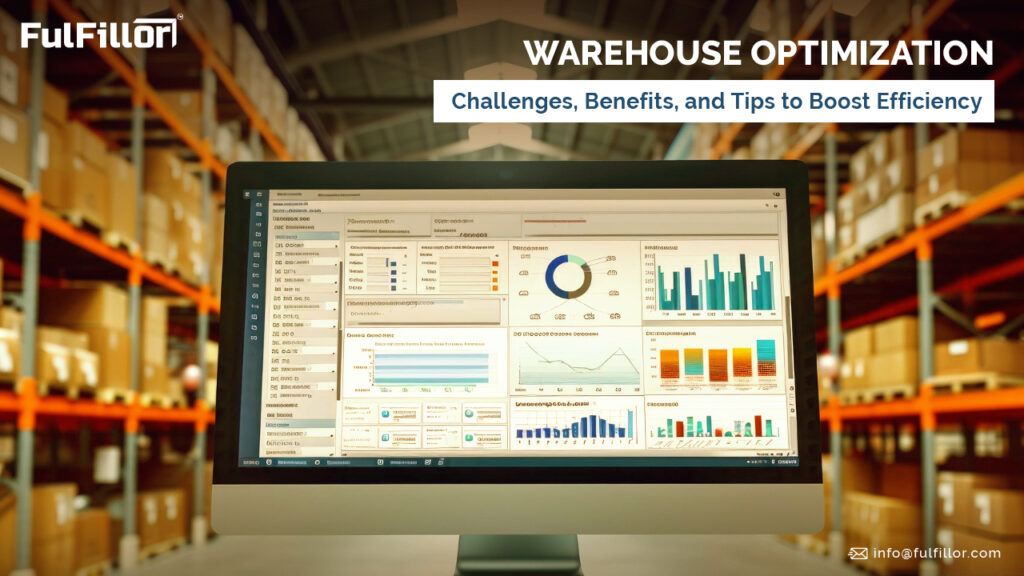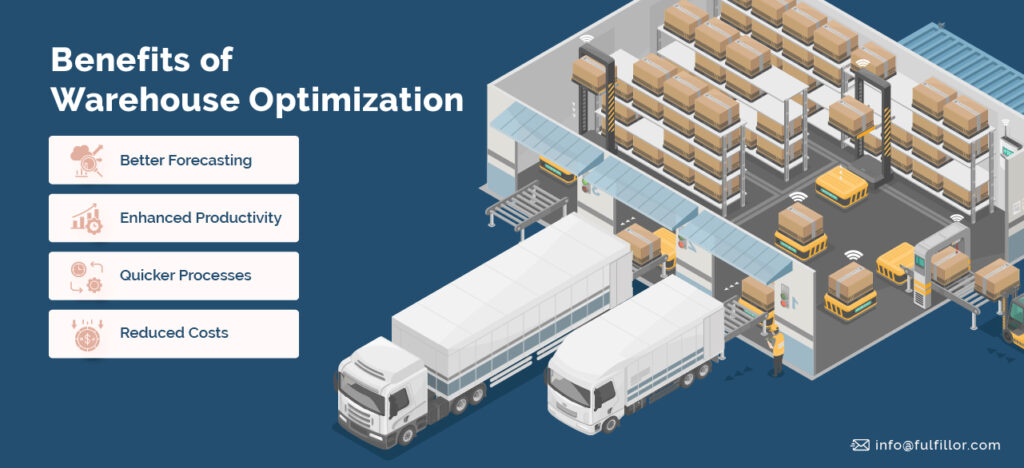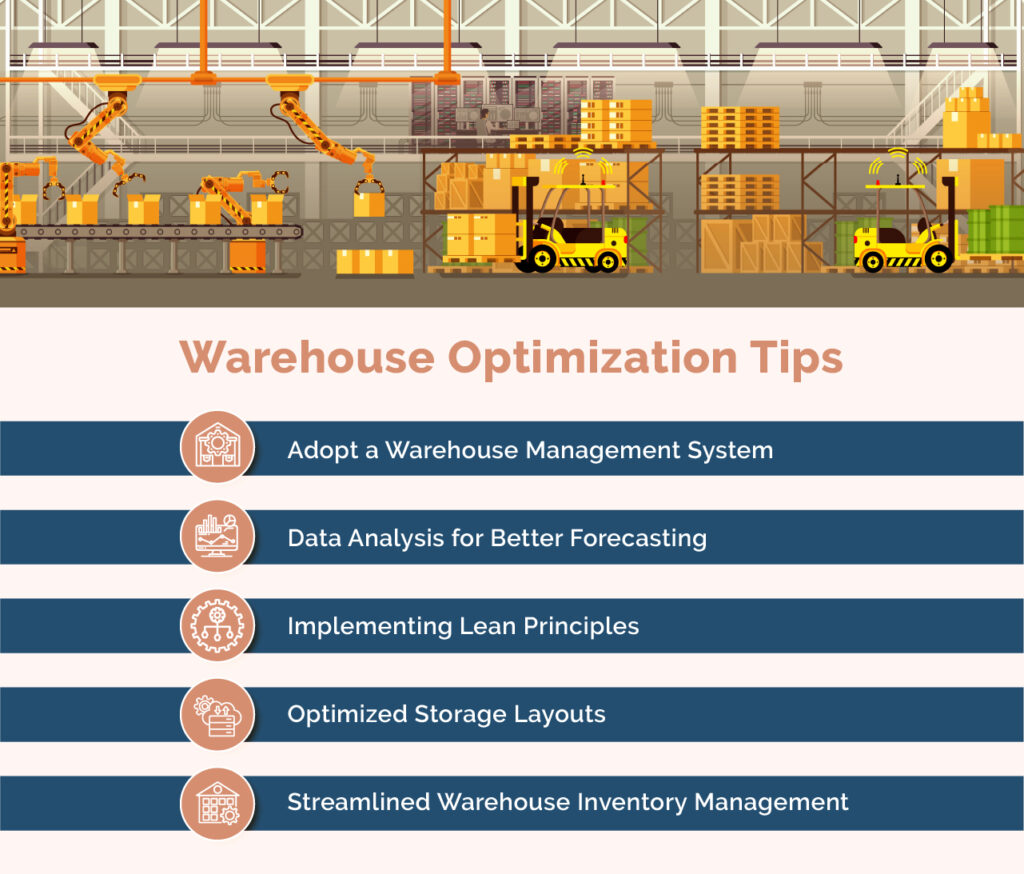
The surge in the e-commerce industry has led to the increasing demand for warehouses. With digitization taking over, businesses are adapting to automated solutions and warehouse management systems. This paradigm shift has helped warehouse owners and businesses streamline their workflows alongside reduced manual tasks.
As per the reports from Grand View Research, the market size of WMS in the U.S. was valued at $783 million in 2023 and is estimated to rise at a CAGR of 20.0% from 2024 to 2030, thus emphasizing growth.
But, what ensures seamless warehouse operations? The answer is optimizing the day-to-day warehouse tasks and processes.
So, if you are a warehouse owner, or own a warehouse management system, this blog is for you. Here we will fill you with some essential tips, tricks, and strategies to implement and improve your warehouse operations.
Starting with the basics, it is important to know about warehouse optimization.
What is Warehouse Optimization?
Warehouse optimization refers to the process of improving the warehouse processes by implementing strategies that help enhance the overall performance of your business. It aims to maximize the use of available resources with reduced wastage and improved productivity.
The key aspects of warehouse optimization include layout and design, inventory management, order management, automation, and more.
Strategically improving these aspects helps devise a more reliable, cost-effective, and advanced solution, that caters to your unique business needs.
Challenges in Warehouse Operations
Warehouses face many challenges when it comes to managing warehousing operations effectively. The few challenges are as follows –
- The very first challenge is warehouse inventory management, which includes maintaining accurate stocks, overstocking, inventory obsolescence, and more which becomes a complex task, thus affecting the order fulfillment process.
- Unorganized stock and inefficient use of space in the warehouses caused due to overcrowded aisles, improper labeling, lack of tools, and more, which might lead to difficulty locating the items, thus affecting the deliveries and also leading to negative customer feedback.
- Errors at every step of the warehouse operations, mostly happen due to the lack of automation, thus resulting in incorrect shipments, higher returns, etc., which further leads to increased costs, reshipping products, and sometimes even losses.
Benefits of Warehouse Optimization
Optimizing warehouse operations helps simplify complex tasks alongside several benefits. Some of them include:

- Better Forecasting
- Enhanced Productivity
- Quicker Processes
- Reduced Costs
Better Forecasting – The primary benefit of warehouse optimization is that it helps in better forecasting. It implies that you can precisely predict future inventory needs with the demand and supply data. This helps eliminate the risks of overstocking and understocking, alongside maximized storage capabilities.
Enhanced Productivity – Optimizing the warehouse processes also helps enhance the productivity of the employees. This means reduced wastage of time and automated processes, which further helps in handling large volumes of orders effortlessly.
Quicker Processes – Warehouse optimization makes the processes quicker and more efficient with automated workflows. It helps save time and effort by eliminating the manual process, thus leading to reduced manual errors with greater customer satisfaction.
Reduced Costs – It also reduces the costs associated with manual processes like labor costs, overtime costs, etc., alongside efficient space utilization. In addition, it further helps in maximizing the profitability of your business.
The aforementioned are just a few benefits and challenges of warehouse optimization and operations respectively. Moving ahead, to ensure seamless warehouse operations with increased productivity and profitability there are several strategies to implement.
5 Ways to Optimize Warehouse Operations
Some of the ways that help optimize the warehouse operations are –

- Adopt a Warehouse Management System
- Data Analysis for Better Forecasting
- Implementing Lean Principles
- Optimized Storage Layouts
- Streamlined Warehouse Inventory Management (sequence, batch, and lot number)
Adopt a Warehouse Management System – A warehouse management system is more than just a software solution. It brings in the power of automation which caters to intelligent order-fulfillment processes alongside accuracy in tasks and increased productivity.
With an advanced warehouse management solution like Fulfillor, you can not only manage the warehouse operations seamlessly but also cater to efficient management while sticking to the industry norms and regulatory standards.
Data Analysis for Better Forecasting – It is one of the key warehouse optimization tips that helps in using data the right way. By analyzing the sales data, search patterns, and market trends you can predict the future business requirements and fill in the stocks accordingly. It further helps in reducing wastage and associated costs, which further leads to increased profitability of your business.
Implementing Lean Principles – Implementing lean practices into the warehouse processes helps ensure optimal operations. This strategy helps in simplifying the supply chain operations by eliminating the inefficiencies with different techniques like ABC analysis, Just-in-Time (JIT) inventory management, and many more, thus making the complex workflows short and effective.
Optimized Storage Layouts – It is one of the most effective strategies of warehouse optimization which helps in efficiently managing the space and layouts in the warehouse. Here the warehouses are analyzed accordingly using several tools and techniques like conveyors, automated storage and retrieval systems, pallets and cartons, and more, which helps in minimizing the travel distance and maximizing the storage capabilities of the warehouse.
Streamlined Warehouse Inventory Management – Optimizing warehouse inventory is a crucial part of the warehousing process. With a robust inventory management system you can not only ascertain the market trends and consumer requirements alongside but you can also reduce the risk of stockouts alongside an accurate order fulfillment process.
Summing It Up
In conclusion, optimizing warehouse operations has become an essential part of achieving success and staying ahead of the competitive landscape.
With the integration of the new plans and strategies over time, you can improve your workflows and also eliminate the warehousing woes. Although warehouse optimization might sound complex, once it is done, it will bring in a plethora of growth opportunities alongside increased customer satisfaction.
Fulfillor – A Smart Warehouse Management Solution, that helps you throughout the warehouse optimization process, thus ensuring business growth and success.
Connect with us to know more, and we will help you with the best solutions tailored to your unique business needs.




